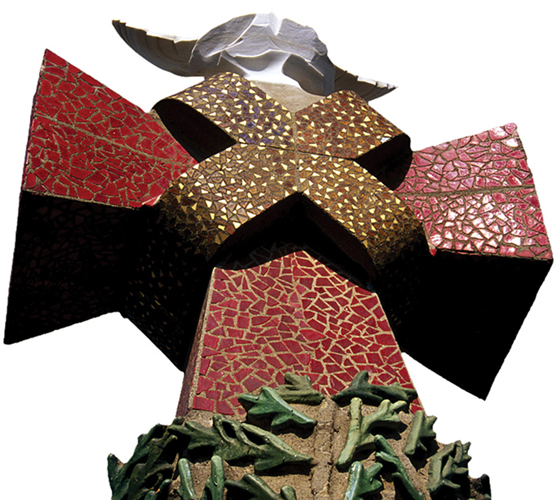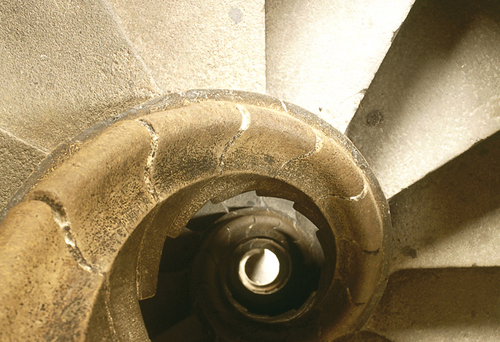Sagrada Família
Nothing quite prepares you for the impact of the Sagrada Família up close. A fantastical tour de force of the imagination, Antoni Gaudí’s ambitious church has provoked endless controversy. After a lifetime of dedication, the church was only partially complete when Gaudí died in 1926 and, as a work in progress, it offers the unique chance to watch the eighth wonder of the world in the making. During the last 80 years and at incalculable cost, sculptors and architects have added their own touches to Gaudí’s dream. Now financed by over a million visitors each year, it is estimated the project will be complete by 2030.
|
Sight GuideThe entrances to the Sagrada Família are on C/Sardenya (along with the gift shop and one of the bell tower lifts) and C/Marina. On the C/Marina side, there are stairs (and another lift) to the other bell towers, and stairs to the museum below. If you don’t want to pay the charge to use the lifts (€2), be warned – it’s quite a climb. |


|
|
|
Top 10 Features
Spiral Staircases
These helicoidal stone stairways, which wind up the bell towers, look like snail shells. They allow access to the towers.
Spires
For a close-up look at the gargoyles and mosaic tiling on the spires, scale the bell tower stairs – or ride up in a lift. The views are equally spectacular (see Sagrada Família). Not for sufferers of vertigo.

Hanging Model
This bizarre contraption in the crypt museum is testimony to Gaudí’s ingenuity. Gaudí created this 3D construction – made of chains and small weighted sacks of sand – as a model for the arches and vaulted ceilings of the Colonia Güell crypt. Noone, in the history of architecture, had ever designed a building like this.
Nave
The immense central body of the temple, still in progress, is made up of leaning, tree-like columns with branches spreading out across the ceiling. Inspired by towering redwood trees, the overall effect is that of a stone forest.
Rosedoor Cloister
In the only cloister to be finished by Gaudí, the imagery is surprisingly modern. Thought to be inspired by the anarchist riots that began in 1909 (see 1909-1931: The Revolutionary Years), the devil’s temptation of man is represented by the sculpture of a serpent wound around a bomb-throwing rebel.
Crypt Museum
Gaudí now lies in the crypt and his tomb is visible from the museum. Renovated to include audio-visual exhibits, the museum offers information about the temple’s construction. The highlight is the maquette workshop, producing scale plaster and stone models for the ongoing work.
Apse
Adorned with lizards, serpents and two gigantic snails, the apse was the first section of the temple to be completed by Gaudí.
Key Sagrada Família Dates


1882
The first stone of the Sagrada Família is officially laid, with architect Francesc del Villar heading the project. Villar soon resigns after disagreements with the church’s religious founders.
1883
The young, up-and-coming Antoni Gaudí is commissioned as the principal architect. He goes on to devote the next 40 years of his life to the project: by the end he even lives on the premises.
1889
The crypt is completed, ringed by a series of chapels, one of which is later to house the tomb of Gaudí.
1904
The final touches are made to the Nativity Façade, which depicts Jesus, Mary and Joseph amid a chorus of angels.
1925
The first of 18 bell towers, 100 m (328 ft) in height, is finished.
1926
On 10 June, Gaudí is killed by a tram while crossing the street near his beloved church. Noone recognizes the city’s most famous architect.
1936
The advent of the Spanish Civil War brings construction of the Sagrada Família to a halt for some 20 years. During this time, Gaudí’s studio and the crypt in the Sagrada Família are burned by revolutionaries, who despise the Catholic church for siding with the nationalists.
1987–1990
Artist Josep Maria Subirachs (b 1927) takes to living in the Sagrada Família just as his famous predecessor did. Subirachs completes the statuary of the Passion Façade. His angular, severe and striking sculptures draw both criticism and praise.
2000
On 31 December, the nave is at long last declared complete.
2010–2030
The vaults of the crossing and the apse underwent renovation until 2010. The completion of the entire Sagrada Família is forecast for 2030, though this depends largely on funding. The building of the Sagrada Família – as Gaudí intended – relies on donations. With so many paying visitors pouring in daily, construction work is gaining momentum.
|
Antoni Gaudí
A flag bearer for the late 19th-century Modernista movement, Antoni Gaudí is Barcelona’s most famous architect. A devout Catholic and a strong Catalan nationalist, he led an almost monastic existence, consumed by his architectural vision and living in virtual poverty for most of his life. In 2001, he was beatified and there are currently moves within the Catalan Catholic Church to declare him a saint.
Gaudí’s extraordinary legacy dominates the architectural map of Barcelona. His name itself comes from the Catalan verb gaudir, “to enjoy”, and an enormous sense of exuberance and playfulness pervades his work. As was characteristic of Modernisme, nature prevails, not only in the decorative motifs, but also in the very structure of Gaudí’s buildings. His highly innovative style is also characterized by intricate wrought-iron gates and balconies and trencadís tiling.

Trencadís Tiling Gaudí’s revolutionary use of trencadís tiling, a decorative art form which consisted of smashing up ceramics and piecing them back together in mosaic patterns, is particularly prevalent at Parc Güell. Another fine example of this technique is the rooftop of La Pedrera where some of the chimneys were tiled using hundreds of broken cava bottles.

Sagrada Família
La Pedrera (1910)
Parc Güell (1900)
Casa Batlló (1905)
Palau Güell (1890)
Bellesguard (1875)
Finca Güell (1887)
Casa Calvet (1899)
Colegio Teresiano (1890)
Casa Vicens (1885)




